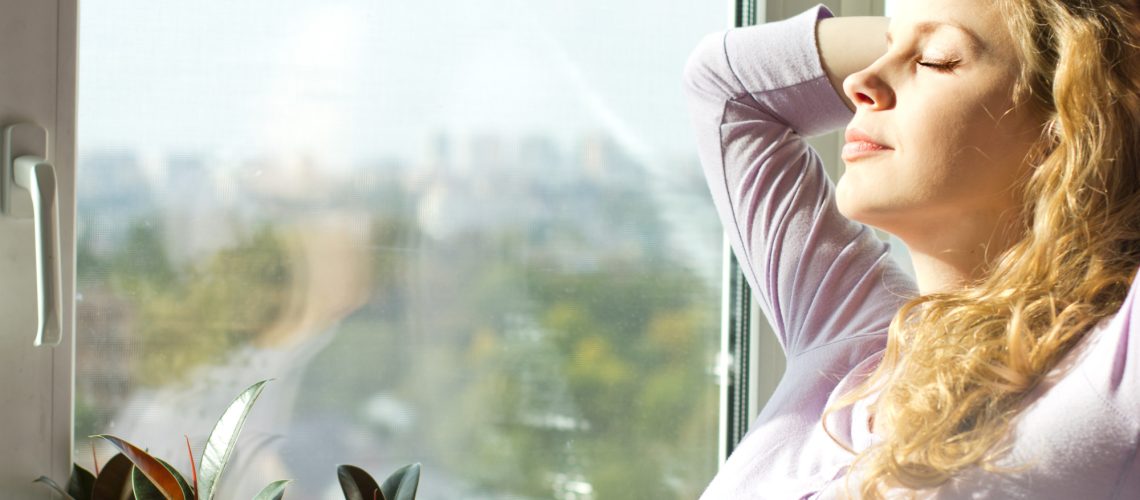Ever wondered how an air purifier works? Or what exactly does an air purifier do when you turn it on? These are questions many people have about an appliance designed to clean one’s home.
There can be many different impurities that appear within a home that are brought in from outside (many of which get suspended in the air throughout the day). An air purifier is designed to sanitize the air and remove these impurities, which can include microorganisms or other pollutants that linger in the air.
Are you struggling to clean the air at home and want to know what an air purifier does? Read our guide to discover how air purifiers work and how they can benefit you.
What Does an Air Purifier Do?
Most air purifiers are built with multiple filters inside of them with a fan that sucks in the air around them.
This air is then circulated back out and filters out any particles or pollutants that are caught with the air sucked in. The clean air is then pushed out as a result, which lets everyone breathe in air that is cleaner and fresher.
The filters that are for air purifiers are made out of paper, fiber, or mesh. Filters need to be replaced every so often or cleaned to remove any particles and dust caught within them.
There are different kinds of filters that can either be replaced multiple times, but they do require more maintenance than other filters. Replacing them keeps the air purifier working in prime condition and allows it to make the air cleaner for you to breath.
The best reason to have an air purifier in a home is to minimize the presence of airborne threats, such as microorganisms. Such threats would include harmful bacteria, mold, pollen, and viruses. It’s a great way to reduce the chances of diseases that spread through the air within a room.
Air purifiers have also become more in demand during the time of COVID-19. People have recently begun to look into purchasing an air purifier for COVID as much as they wanted an air purifier for smoke or allergies.
Types of Air Purifier Filter Technologies
As advances in technology have occurred, air purifiers can utilize a number of filters in combination with one another. While most purifiers have High-Efficiency Particulated Air (HEPA) filters, others will also utilize other filters simultaneously. HEPA filters are the most common on the market.
There are also air purifiers that do not use a HEPA filter at all. They are lighter and cheaper but are also less noisy than other air purifiers for home. Instead of a filter, the air is sucked in and run through 32 mini-ducts that heat it up to 400º F.
Other kinds of filters you’ll find include activated carbon and electrostatic precipitators.
Activated carbon can do well at capturing bad odors, but is not as effective with bacteria and viruses that are in the air. On the other hand, an electrostatic precipitator or ionizer uses high voltage electricity that charges and captures particles that pass through, but needs maintenance regularly and can release gas that is damaging to the lungs.
Ultraviolet light purifiers utilize UV rays to eliminate germs that float in the air that you breathe. However, this kind of purifier is also known at times to release ozone into the air.
Who Should Get an Air Purifier?
Most people who purchase an air purifier for allergies do so to help alleviate some of those allergy-related symptoms. It helps them to breathe in the air without agitating their symptoms.
Others will want to have one because they want to get rid of odors, like cigarette smoke or other odors in the air. But another reason to have a purifier is for those who suffer from asthma.
A home might not have good circulation of air if someone is having a flare-up of asthma, or if you notice dust in the air frequently. This can come from objects on the walls or furniture that hasn’t been cleaned in a long time, all of which can contribute to flare-ups.
Getting an air purifier for the home can help reduce this by a large amount and make breathing a lot easier.
What an Air Purifier Doesn’t Help With
While there is a lot that an air purifier can do for the home, there are a few things where it won’t be too effective.
This includes removing contaminants that are atop surfaces or sitting within bedding or carpeting. Air purifiers are made to remove things within the air, not things building up on top of surfaces. Particles that are already floating within the air can be picked up by the air purifier.
Large amounts of dust that cakes upon the ground or on furniture won’t be removed by an air purifier, especially if you have large amounts of dust within the area.
Getting the Best From Air Purifiers
After reading our guide on everything about air purifiers, you’ll be able to choose the best air purifier for your own home.
When it comes to raising the quality of the air we breathe and improving our daily lives, having an air purifier is a great tool to have. Good quality and clean air can make a world of difference for anyone in the near future.
Visit the Airfree blog for other helpful blog posts about improving respiratory health next.


